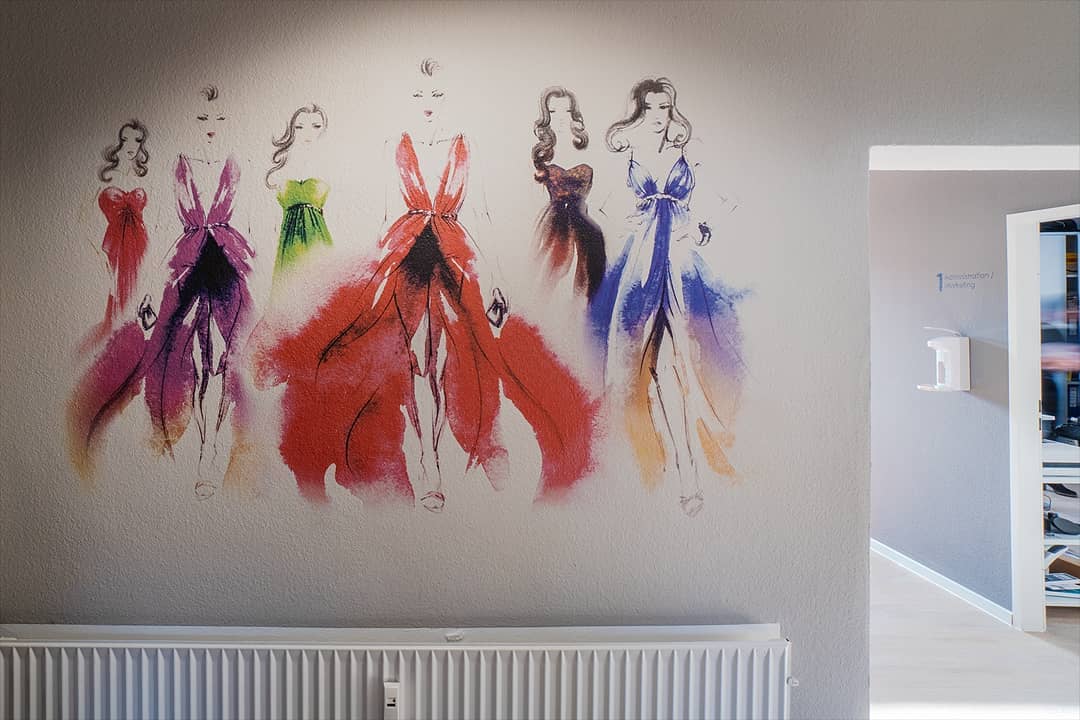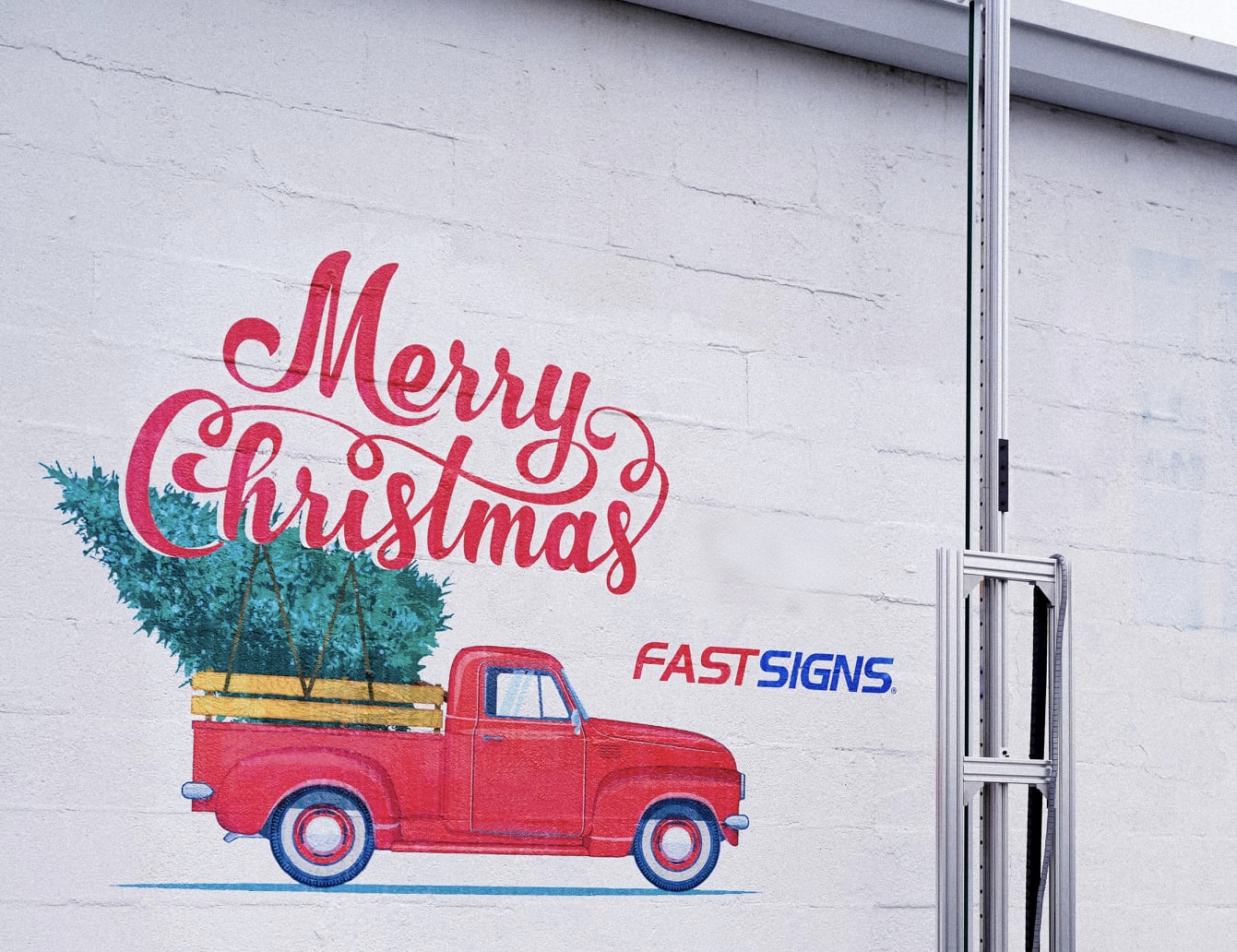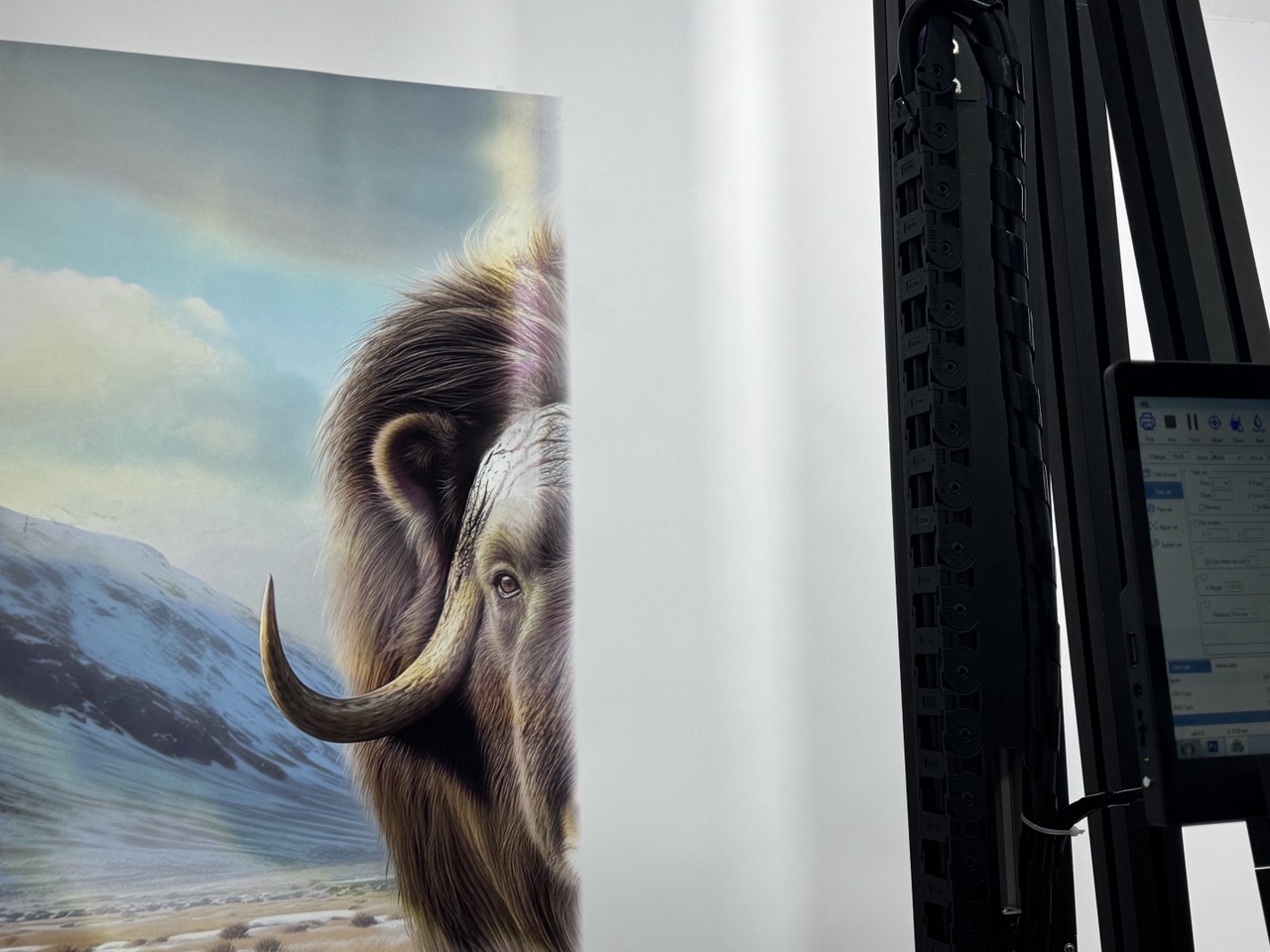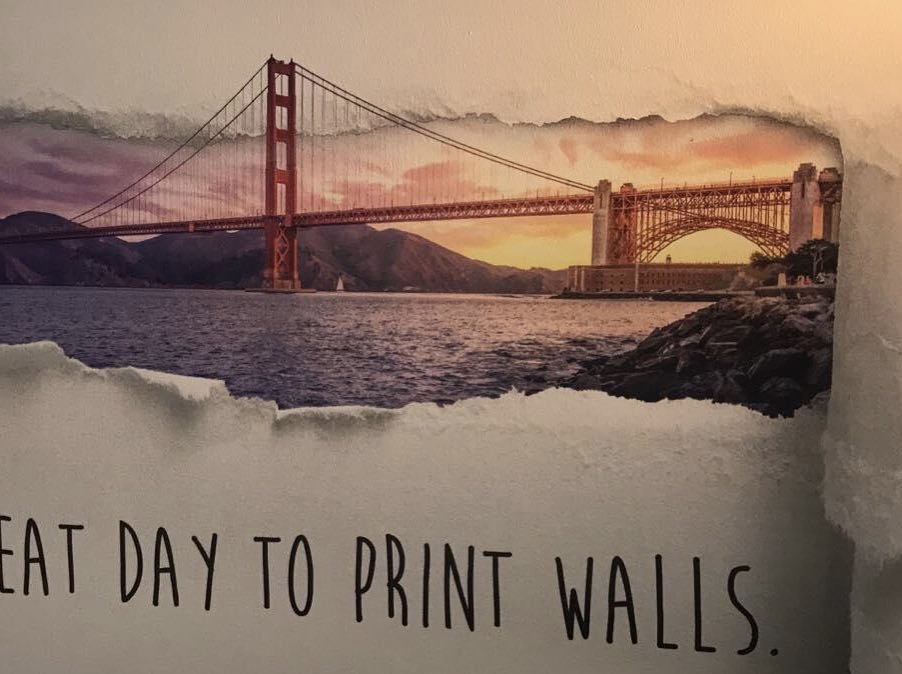Wall art and commercial décor are evolving fast, thanks to new printing technologies. A digital wall printer lets you create sharp, vibrant images with ease, while a 3D wall printer adds depth and texture that make designs stand out. Many entrepreneurs and businesses face the same question: should you go with a digital wall printer or invest in a 3D one? The right choice really depends on your needs, budget, and vision.
Digital vs. 3D Wall Printers
From my experience, both digital and 3D wall printers are great for decorating walls inside and out. But I find they work best for different kinds of projects and places.
Key Differences and Features
| Feature | Digital Printers | 3D Printers |
|---|---|---|
| Image Type | Make flat, 2D pictures. | Build images in layers you can feel. |
| Artistic Effect | Excellent for sharp, colorful images; perfect for clear graphics and company logos. | Create a textured feel that stands out visually and to the touch. |
| Creation Speed | Quite fast; can finish a full mural in a few hours. | Also fast, but true 3D texture may take more time if the design is complex. |
| Required Operator Skill | Easy to use; runs on automatic software, needing little manual work. | Also easy to use; automatic software with minimal manual input needed. |
| Supported Surfaces | Best on smooth surfaces like painted walls or tiles. | Can print on glass, wood, metal, brick, and even concrete. |
| Durability | Very strong; a great choice for business spaces. | Extremely durable; prints can last for years, even in tough conditions. |
| Relief Depth | Completely flat with no texture. | Raised designs up to several millimeters thick, making art more interesting to see and touch. |
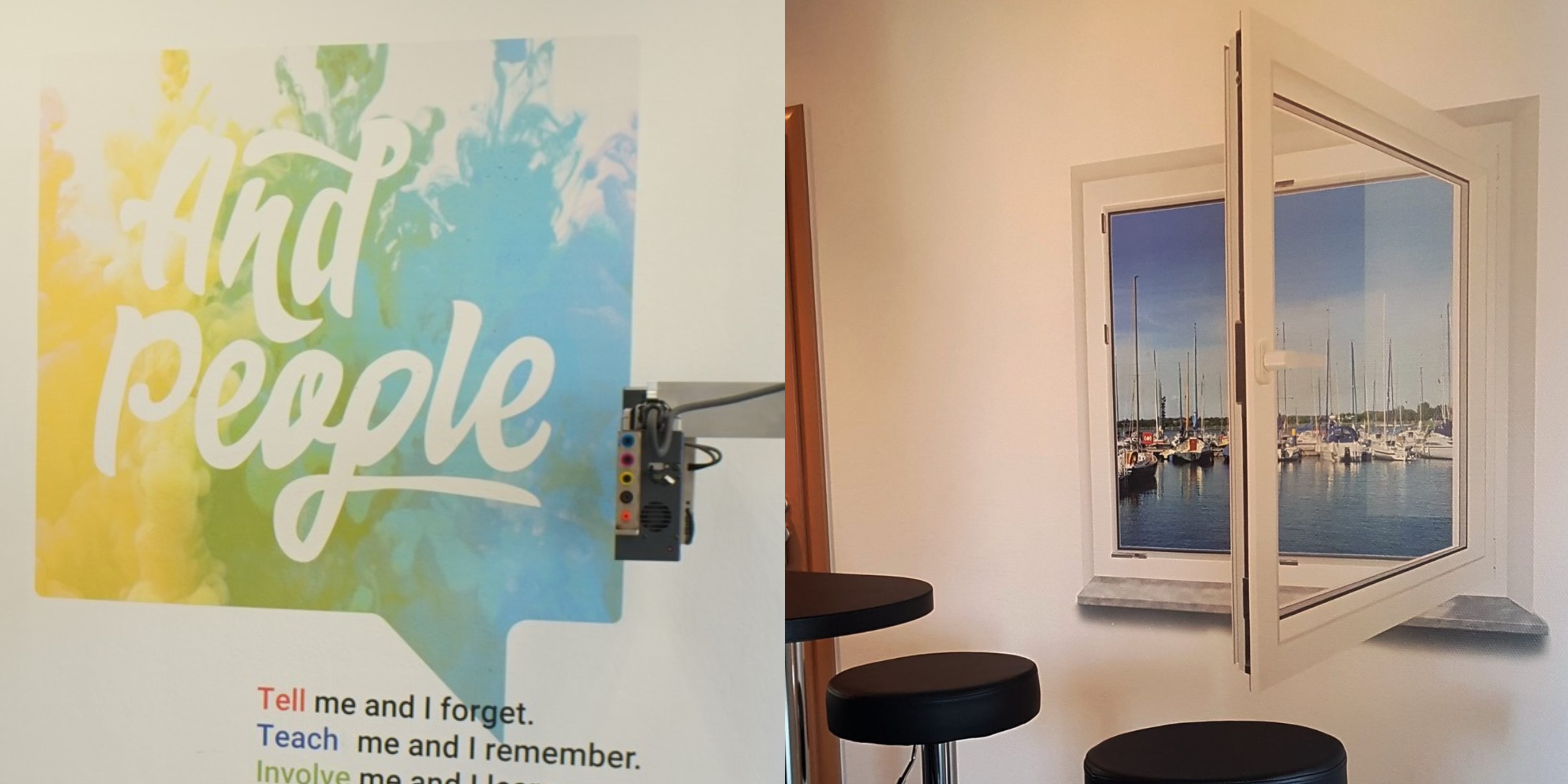
Digital Vs. 3D
Typical Applications
Digital Wall Printers: I often see digital printers used in hotel lobbies and on office walls. They’re also great for ads and in schools, where you want bright, 2D pictures.
3D Wall Printers: I believe 3D printers are a better fit for art galleries or theme parks. Their physical texture also works well for store displays and interactive exhibits.
Example Use Cases
- A digital wall printer can produce a high-resolution mural for a hotel lobby in no time. I feel this instantly improves the look of the space.
- You could use a 3D wall printer to create a textured mural in a hotel’s reception area. This makes for a unique spot where guests love to take photos.
I hope these differences help you choose the right printer for your project. Making the right choice will ensure your design looks great and lasts for a long time.
Bring Your Art to Life with a Cost-Effective Wall Printer
Unlock Your Creativity
2 in 1 Wall Printer
What is a Digital Wall Printer?
A digital wall printer is a machine that turns your digital designs into vibrant 2D wall art using modern inkjet technology. It starts with a design on your computer, and the printer’s precise print head sprays special ink directly onto the wall, producing sharp, detailed graphics. These printers are efficient, capable of handling large murals and complex patterns quickly, and are perfect for advertising murals, interior design projects like hotel lobbies or schools, and branding flat surfaces with crisp, professional logos. With smooth, colorful 2D images and no raised textures, they offer a fast and effective way to bring your designs to life.
What is a 3D Wall Printer?
A 3D wall printer is a special machine that creates touchable, textured designs by building up ink layer by layer. Starting with a 3D design from specialized software, the printer adds precise layers of ink to form raised patterns that you can both see and feel. This technology offers real depth and texture, giving creative freedom to make custom raised effects that take art and branding to the next level. Ideal for engaging spaces like boutique hotels or children’s areas, as well as businesses and public spaces, 3D wall printing creates unique, eye-catching visuals that stand out. Example uses include textured murals in art galleries and colorful raised designs in kids’ areas, inviting interaction and making spaces more memorable.
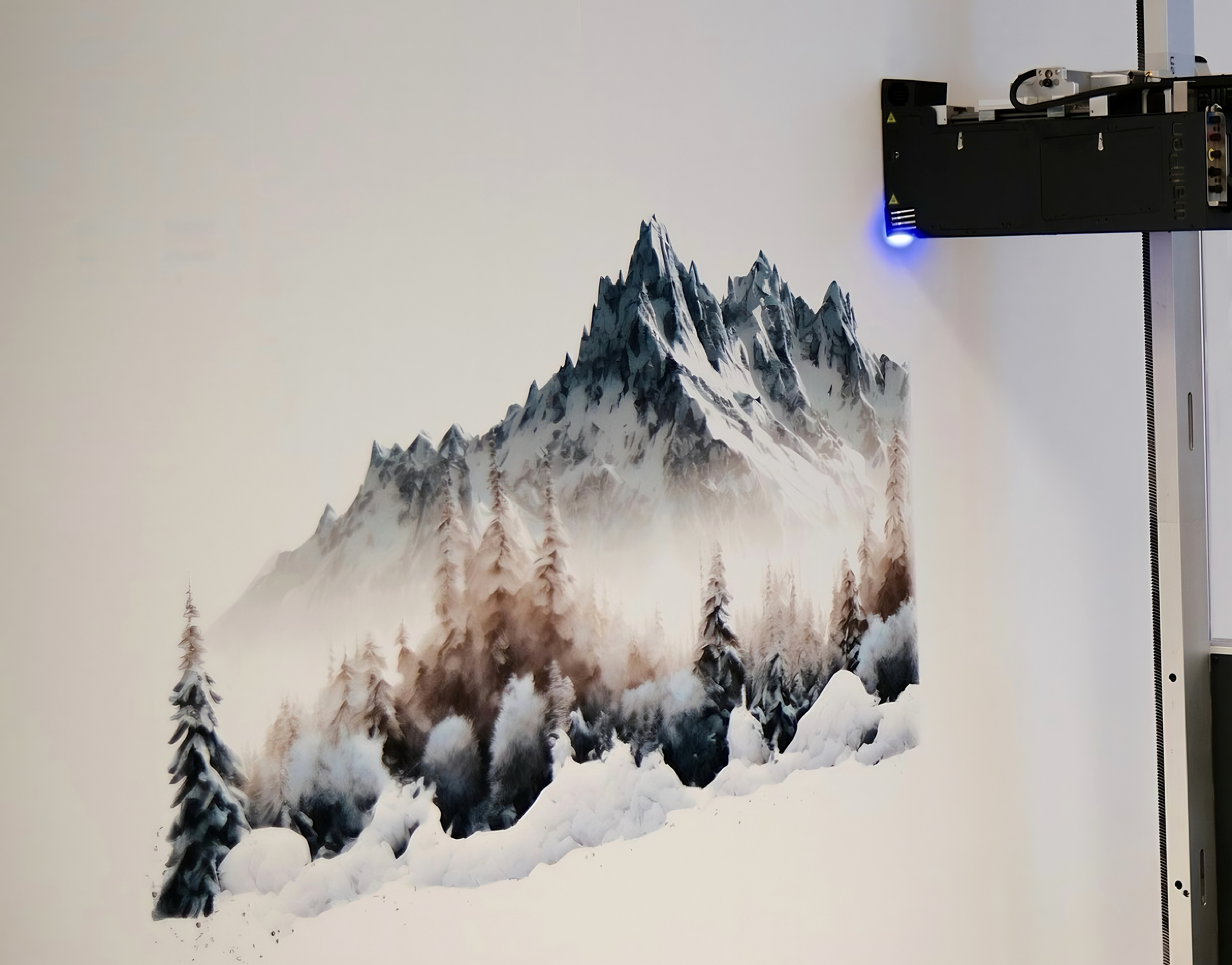
Digital Vs 3D Wall Printer: Technology and Printing Capabilities
Let’s compare digital and 3D wall printer machines. I see a few key differences you should know. They both create modern wall art, but how they work and what you get are very different.
Core Printing Technology
- Digital Wall Printers use special inkjet heads. They print flat, high-resolution 2D pictures right onto a surface. Most models I’ve seen offer up to 1440 dpi, which gives you images that look like real photos with bright colors. I like that they use UV or eco-friendly inks. These inks dry fast, have no smell, and are safe, which is a big plus for any indoor job.
- 3D Wall Printers use a similar inkjet system, but they have special print heads. These heads build up multiple layers of ink. This process creates a textured, embossed design you can actually feel, with a depth of several millimeters. The ink is also UV-cured and is made to be tough and waterproof. Based on my experience, you start with a 3D file, and the printer then builds the raised design layer by layer.
Printing Performance and Speed
- Digital Printers I’ve worked with are much faster. They print between 10–35 m² per hour. I suggest them for large, detailed projects where time is a factor.
- 3D Printers are a bit slower. Their rates are between 2–10 m² per hour. Creating thick, raised textures takes more time, so I recommend planning for that with complex designs.
Supported Surfaces & Adaptability
I’ve found that both printers work on many surfaces: concrete, plaster, wood, tile, and glass. What I think is special about the 3D printer is its power to create raised art on any of these materials. This gives designers and businesses more creative options.
Ease of Operation
In my opinion, both printers are easy to use. They have automatic controls, simple touchscreens, and pre-designed templates. Digital wall printers can be a bit simpler because you just upload a flat image file. For 3D wall printers, you have to prepare a 3D file to map out the texture. It’s one extra step, but it’s still very manageable for operators.
Print Quality, Durability & Creativity
- Digital Wall Printers are excellent for creating crystal-clear images, smooth gradients, and sharp lines. They reproduce photographs with great accuracy. The prints resist fading and weather for 5–10+ years. I believe this makes them a great choice for busy areas or exposed walls.
- 3D Wall Printers offer new creative avenues. Beyond simple color, you can design raised reliefs and textures that make the art pop. These embossed images are very resistant to weather, humidity, and wear. I’d recommend them for challenging locations.
Feature Comparison Table
| Feature | Digital Wall Printer (2D) | 3D Wall Printer |
|---|---|---|
| Output | Flat images, no physical texture | Embossed, tactile relief, multilayer texture |
| Resolution | Up to 1440 dpi, photo-like detail | High-res plus a few millimeters of depth |
| Printing Speed | 10–35 m²/hour | 2–10 m²/hour |
| Surfaces | Concrete, plaster, wood, tiles, etc. | Same as 2D, but with raised art on any material |
| Ink Tech | UV/eco, instant dry, odorless, non-toxic | UV ink for texture, tough and waterproof |
| Ease of Use | Automated, touchscreen, templates | Similar operation, but requires a 3D file for relief |
| Creativity | Great for photos, sharp lines, and colors | Adds 3D texture, shadows, and tactile feel |
| Durability | Resists fading & weather for 5–10+ years | Extra tough, resists weather and humidity |
Advantages of Digital Wall Printers
From my experience, digital wall printing machines have some great benefits for both business and creative work. These machines are fast and deliver excellent print quality. I want to share the main advantages I’ve seen:
Sharp and Vivid Print Quality: Digital wall printers produce precise 2D images with sharp edges, clear details, and vibrant colors. Whether it’s logos, photos, or patterns, the final result always looks crisp and professional.
Fast and Efficient Production: One of the biggest advantages is speed. Large projects can be completed in just a few hours, reducing labor costs and avoiding errors from manual painting, which saves both time and money—perfect for businesses that need quick results.
Versatility on Different Surfaces: These printers can print on a variety of smooth surfaces like painted walls, tiles, and other finishes. This makes them ideal for hotels, offices, schools, or any indoor space that wants unique wall visuals.
Easy Operation for All Users: Digital wall printers are simple to use, with intuitive controls and automatic settings. Even beginners can produce high-quality prints without extensive training, making them accessible for all skill levels.
Based on these points, I recommend digital wall printers as a smart choice. They are perfect for anyone who needs a reliable, detailed, and quick way to decorate walls or add branding.
Advantages of 3D Wall Printers
3D wall print machines offer unique benefits for murals and wall graphics. I think they are a top choice for certain creative and commercial projects.
Unmatched Creativity and Depth: 3D wall printers create raised, textured images that add real depth, making patterns and designs appear to “emerge” from the surface. This effect brings life and dynamism to the artwork, making spaces more memorable.
Powerful Visual Impact: The embossed, tactile surfaces engage viewers through both sight and touch. This interactive quality is ideal for theme parks, stores, or exhibits where designs need to stand out.
Broad Material Compatibility: 3D wall printers can print on concrete, wood, brick, glass, metal, and even rough surfaces. This flexibility allows creative ideas to be realized on challenging architectural features or unusual walls.
Exceptional Durability: Using UV-curing technology, 3D prints become highly resistant to fading, weather, and abrasion. They hold up well in busy commercial spaces or outdoor areas, ensuring long-lasting impact.
Ideal for Standout and Experiential Designs: These printers are perfect for creating immersive environments or signature art pieces. They excel in interactive displays, accent walls, and branding installations, producing art that is both striking to look at and touchable.
Downsides of Digital and 3D Wall Printers
Before you pick a digital or 3D wall printer, I think you should know their downsides. This way, you know what to expect. You can choose the right printer for your project.
What Digital Wall Printers Can’t Do
Digital printers produce flat, 2D images, so they cannot create raised or textured surfaces that make wall art feel more interactive and alive. They excel at sharp logos, detailed graphics, clear text, and photo-like murals, but if you want texture or depth, a digital printer isn’t the right choice.
Downsides to Using a 3D Wall Printer
3D wall paint machines take longer to print, as creating designs layer by layer can make even a single mural take several hours, slowing down large projects. They are also harder to use, requiring knowledge of special 3D software and careful preparation of each print file. Additionally, 3D printers cost more upfront than standard digital models, and you should plan for higher maintenance and material expenses if you use them frequently.
How I Suggest You Choose
- If you need simple, eye-catching wall graphics or branding, I recommend a digital wall printer. It’s an affordable and easy option.
- If you want something unique that people can touch, you’ll need depth. A 3D wall printer can create memorable results. But, you must be ready for a slower process. The setup is more difficult, and you will need a bigger budget.
I suggest you pick the printer that best matches your goals, your budget, and the look you want to create.
My Guide: Picking a Digital vs. a 3D Wall Printer
If you’re choosing between a digital and a 3D wall printer, I suggest you consider these points. This will help you make the best choice for what you need.
Digital Wall Printer: My Thoughts on Cost, Speed, and 2D Quality
Digital mural printing machines produce sharp, flat images like logos and murals, making them ideal for hotel lobbies, offices, and schools. They print fast, at 10–35 m²/hour, helping lower labor costs and meet project deadlines. With a lower startup cost than 3D printers and easy-to-use controls, they’re great for smooth surfaces like painted walls, tiles, and glass. I recommend them for projects that need bright 2D visuals with no texture, and the prints last long, especially with UV-curable inks.
3D Wall Printer: My Take on Creativity, Impact, and Texture
3D wall printers create layered, touchable designs, adding depth and making artwork unique and memorable. They work well for feature walls, theme parks, and art galleries, and can print on rough surfaces like brick, wood, and concrete. Printing is slower, at 2–10 m²/hour, and requires more startup investment and 3D software training. However, the results are highly durable, holding up against weather and wear, making them perfect for busy areas or outdoor use.
My Key Decision Factors
- Match the printer to your goals: I suggest digital for flat graphics if you need speed and lower costs. Choose 3D if you want art with texture and can afford the extra time and money.
- Think about the surface: You should always test the wall material first. From my experience, digital works best on smooth surfaces. A 3D printer can handle both smooth and textured walls.
- Consider your budget: Digital is more cost-effective for big or repeat jobs. 3D printers create special pieces that can justify a higher cost if it fits your project.
- How long it needs to last: Both printers make prints that last. In my experience, 3D prints are tougher and more engaging in busy or rough environments.
To get the best result, I recommend you look closely at your project, wall surface, and budget. This will help you pick the printer that fits what you want to create.
Summary
If speed and cost-efficiency are your top priorities, a digital wall printer is perfect for starting out or handling large projects. But if you’re aiming for eye-catching, layered effects that set your work apart, a 3D wall printer delivers that wow factor. Either way, both options can open up exciting opportunities for your business. Ready to take the next step? Reach out to us today, and we’ll help you choose the wall printer that turns your ideas into reality!

